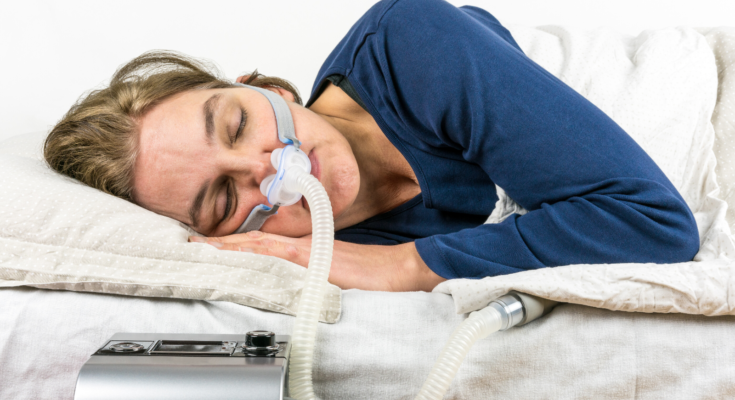Are you wondering why you need a sleep study? A sleep study is a diagnostic test that helps your doctor determine the cause of your sleep problems. Sleep studies are usually conducted in a hospital or clinic, but they can also be done at home with portable equipment.
Sleep disorders affect one in three adults and one in ten children. According to the National Institutes of Health (NIH). Sleep disorders can cause daytime fatigue, poor concentration. And other health problems such as heart disease or stroke. In some cases, untreated sleep disorders may lead to death from heart failure. Or car accidents caused by drowsiness behind the wheel.
Sleep Apnea
Sleep apnea is a common sleep disorder that causes you to stop breathing for brief periods during sleep. It occurs when the muscles in your throat relax and block the airway, which then causes you to wake up. And start breathing again.
There are two types of sleep apnea: central and obstructive. Central sleep apnea happens when your brain fails to signal your body that it’s time to breathe. This type is more common in people with heart disease or high blood pressure. Obstructive sleep apnea occurs when the soft tissue in your mouth or nose collapses onto the airway. Making it difficult for air to get through (this type accounts for 90 percent of all cases).
Insomnia
Insomnia is a common sleep disorder that affects millions of people every year. It’s characterized by difficulty falling asleep, staying asleep, or both. Insomnia can be temporary or chronic and may be caused by stress. Anxiety, depression, or other factors like pain or illness.
If you have insomnia symptoms, it’s important to talk with your doctor about treatment options for your specific situation. Treatment options include lifestyle changes such as establishing regular bedtime routines. And getting enough exercise, sleeping pills, or cognitive behavioral therapy (CBT).
Narcolepsy
Narcolepsy is a neurological disorder that causes you to fall asleep suddenly and unexpectedly. You may also experience muscle weakness, paralysis, or loss of consciousness while falling asleep or waking up.
Narcolepsy affects around 1 in 2,000 people worldwide. It can occur at any age, but it’s most common between the ages of 15 and 25. In some cases, narcolepsy might run in families (hereditary).
The main symptom of narcolepsy is excessive daytime sleepiness (EDS). Which means you feel tired during the day despite getting enough sleep at night. And this can lead to problems with your daily activities like work or school. Because you’re too tired to focus on them properly.
Restless Leg Syndrome
Restless leg syndrome (RLS) is a disorder that causes an urge to move your legs. This can happen when you’re sitting or lying down, and it can make it hard to fall asleep or stay asleep.
RLS symptoms include:
-
An unpleasant tingling or itching sensation in your legs that makes them feel like they need to move
-
An overwhelming urge to move your legs, often causing you to shift positions frequently during the night. And wake up with an uncomfortable feeling in your legs
-
Waking up often during the night with an intense need for movement
Periodic Limb Movement Disorder
Periodic limb movement disorder (PLMD) is a sleep disorder that causes you to move your limbs during sleep. It’s also known as nocturnal myoclonus or restless leg syndrome.
PLMD is most common in older adults but can affect people of any age. The exact cause of PLMD isn’t known, but it may be related to an imbalance of brain or nervous system chemicals. If you have PLMD, you’ll likely notice that your legs twitch and jerk periodically throughout the night when they’re at rest–for example, when lying down with both knees bent or sitting with crossed legs on a chair. These episodes usually last only a few seconds each time they occur. And don’t wake up people who have them; however. If there are enough movements during sleep (say 20 times per hour). They can interfere with getting good quality restorative sleep and lead to daytime fatigue as well. As other symptoms like headaches or memory problems due to lack of adequate restorative deep sleep cycles. Where these symptoms would normally resolve themselves naturally without any intervention needed whatsoever!
In-Home Sleep Study
An in-home sleep study is a diagnostic test that can help determine if you have a sleep disorder. During the test, you’ll stay overnight at your home or in a nearby hotel. And be monitored by technicians who will watch for signs of problems like snoring or breathing difficulties during your slumber.
If you think you may have one of these conditions, an in-home sleep study could be right for you:
-
Obstructive Sleep Apnea (OSA) – OSA occurs when soft tissue collapses into the airway during sleep, blocking airflow. And causing loud snoring and daytime drowsiness and fatigue.
-
Central Sleep Apnea (CSA) – CSA occurs when the brain fails to signal muscles responsible for breathing during REM cycles of deep sleep; this causes shallow breaths or no breaths at all throughout the night resulting in poor quality restorative rest time spent asleep, which leads to daytime fatigue issues such as headaches & irritability.
Conclusion
Now that you know more about the common sleep disorders that can be diagnosed with. A sleep study, it’s time to put your new knowledge into practice. Sleep studies are important for diagnosing and treating these disorders so that you can get a good night’s rest.
If you’re experiencing any of these symptoms, it’s time to talk to your doctor about your sleep health. They can help determine if a sleep study is right for you and recommend the best action. Texas Sinus & Snoring is here to help if you decide on an in-home sleep study!


